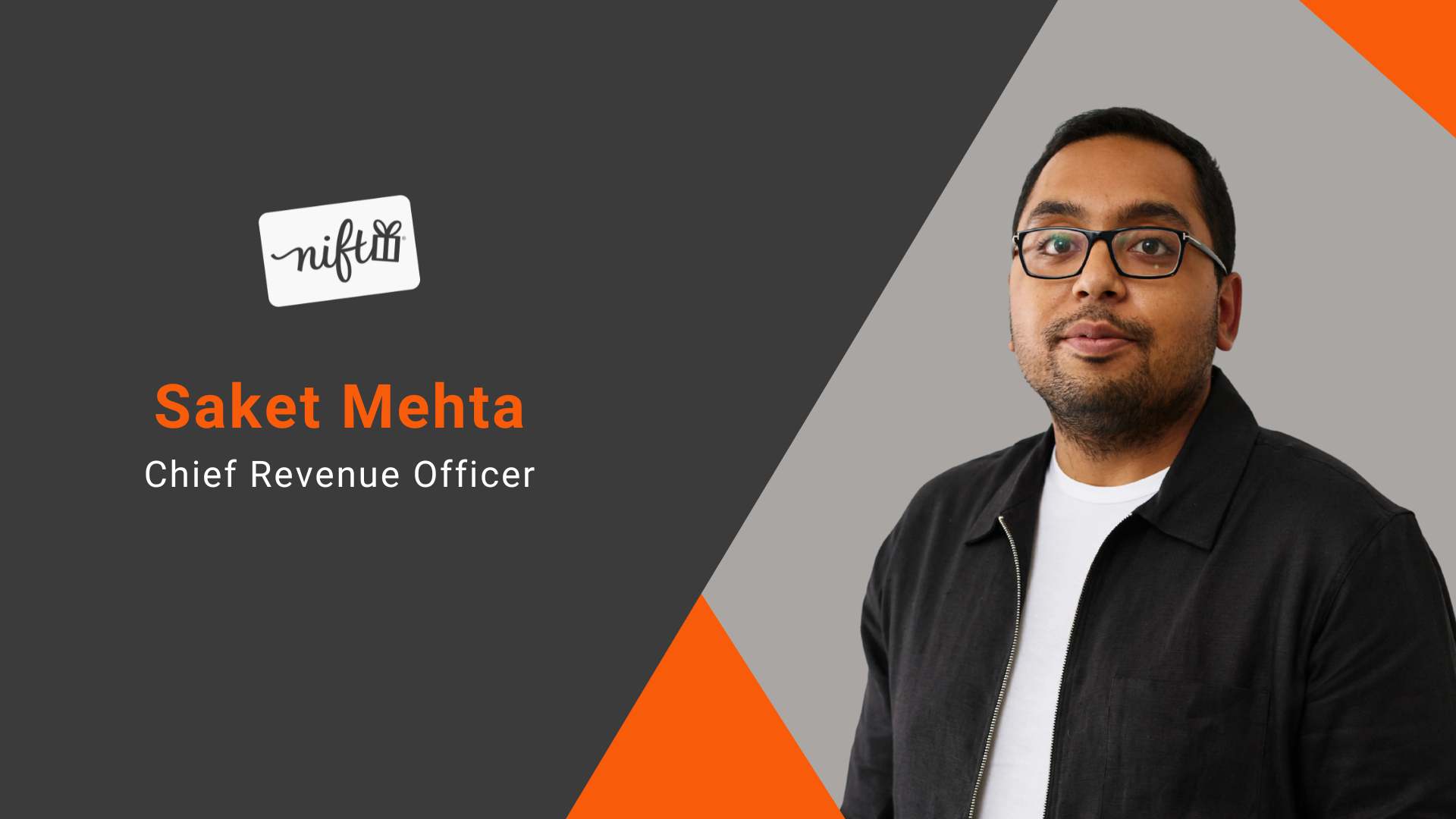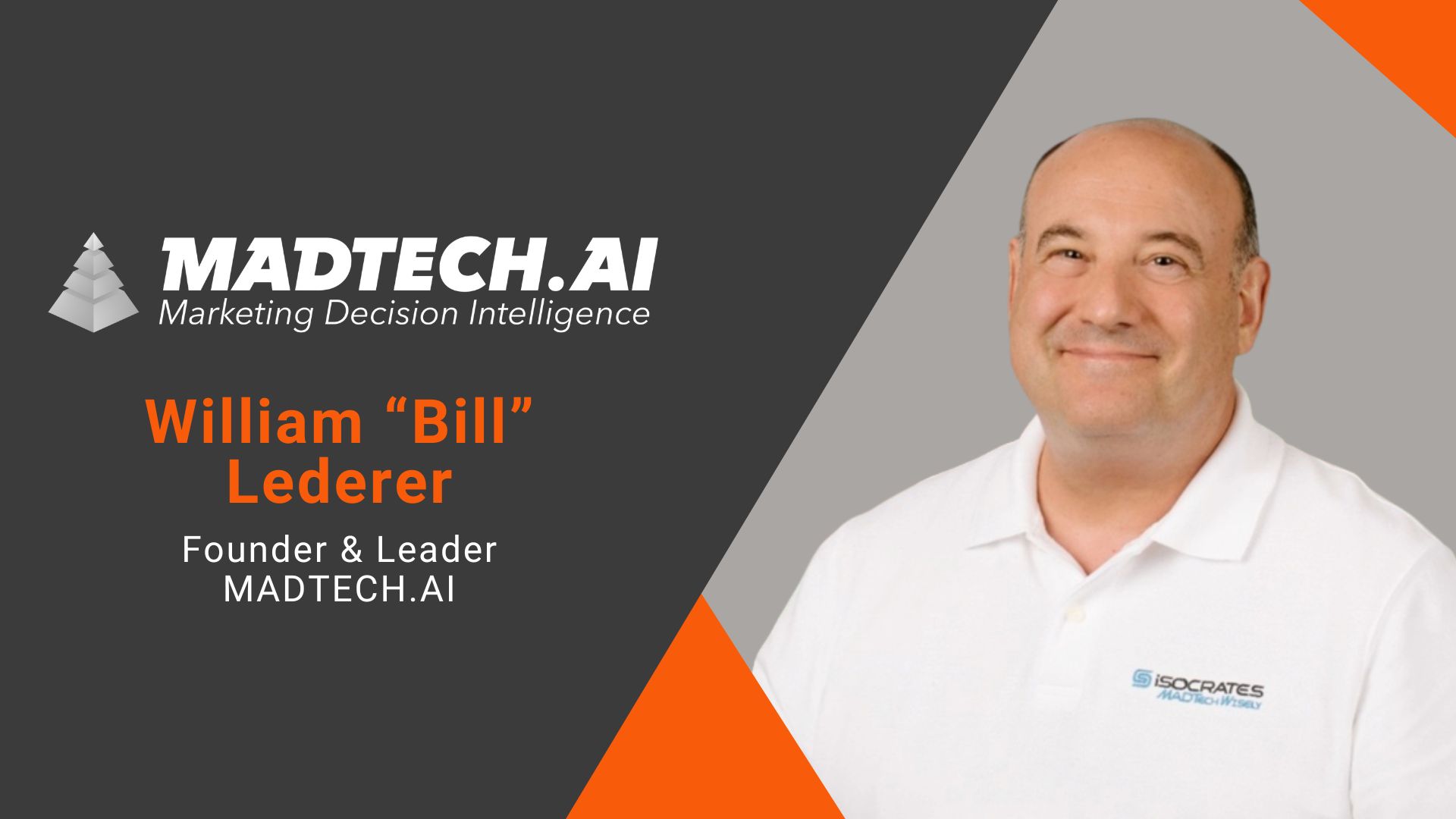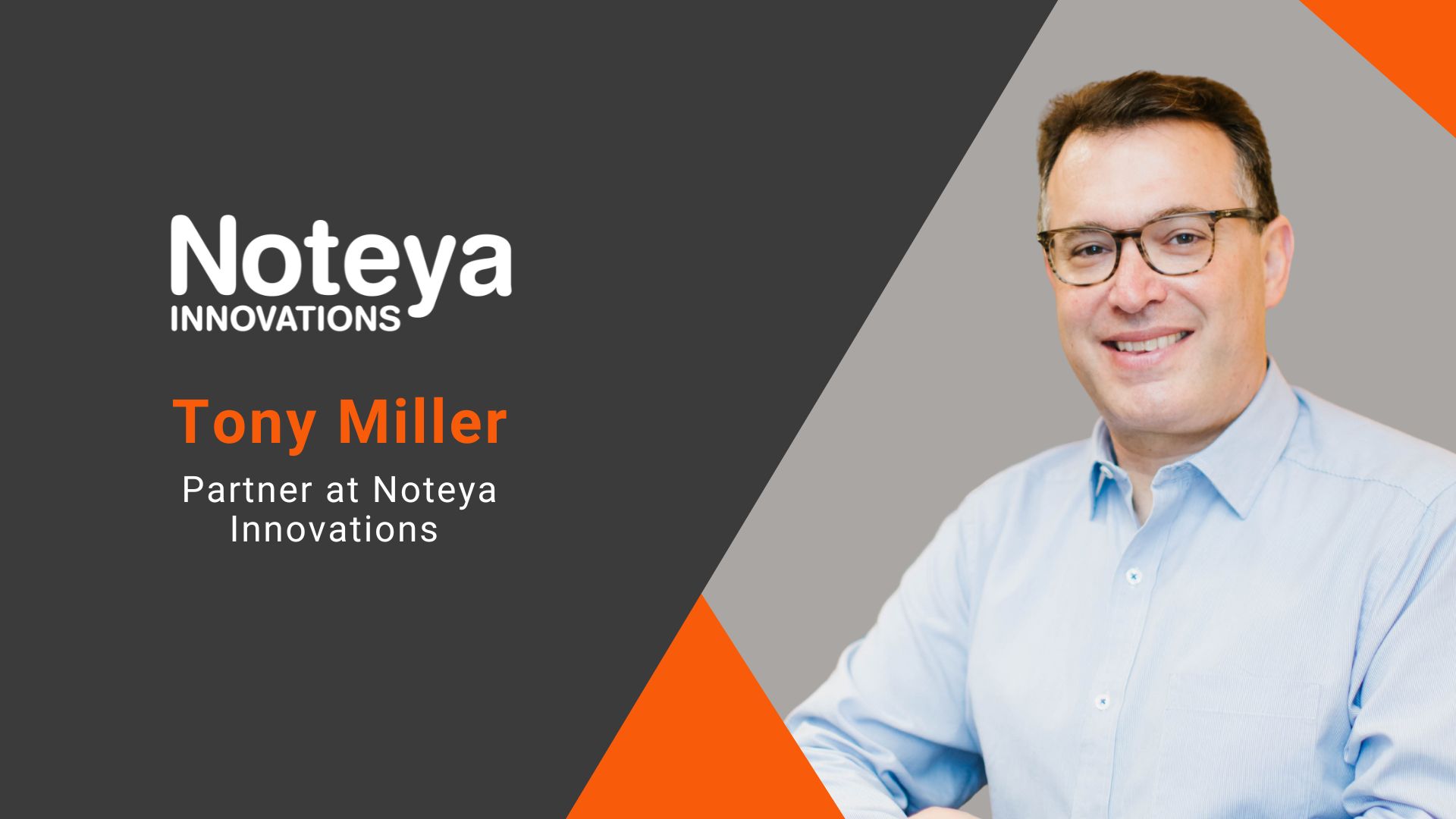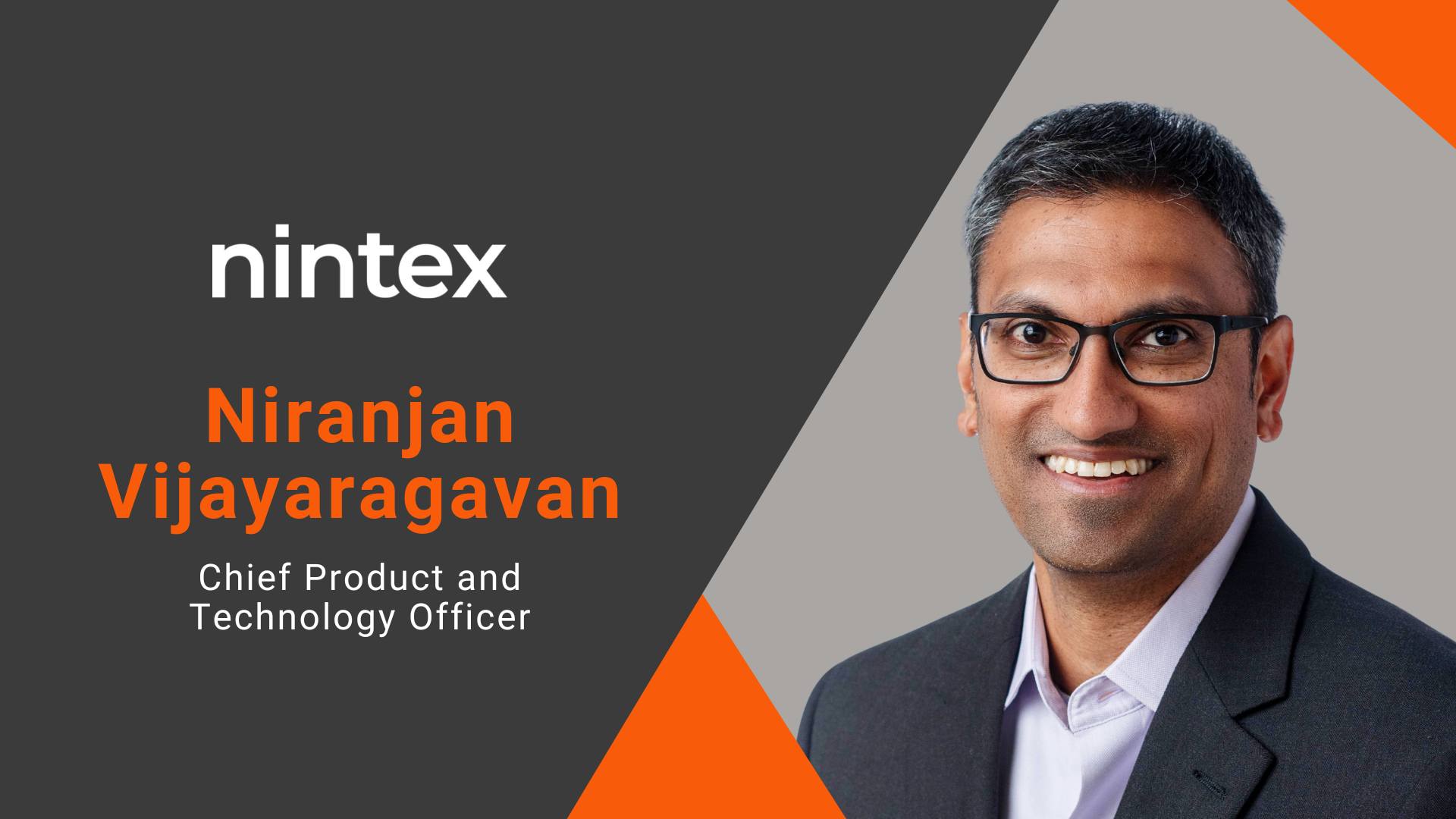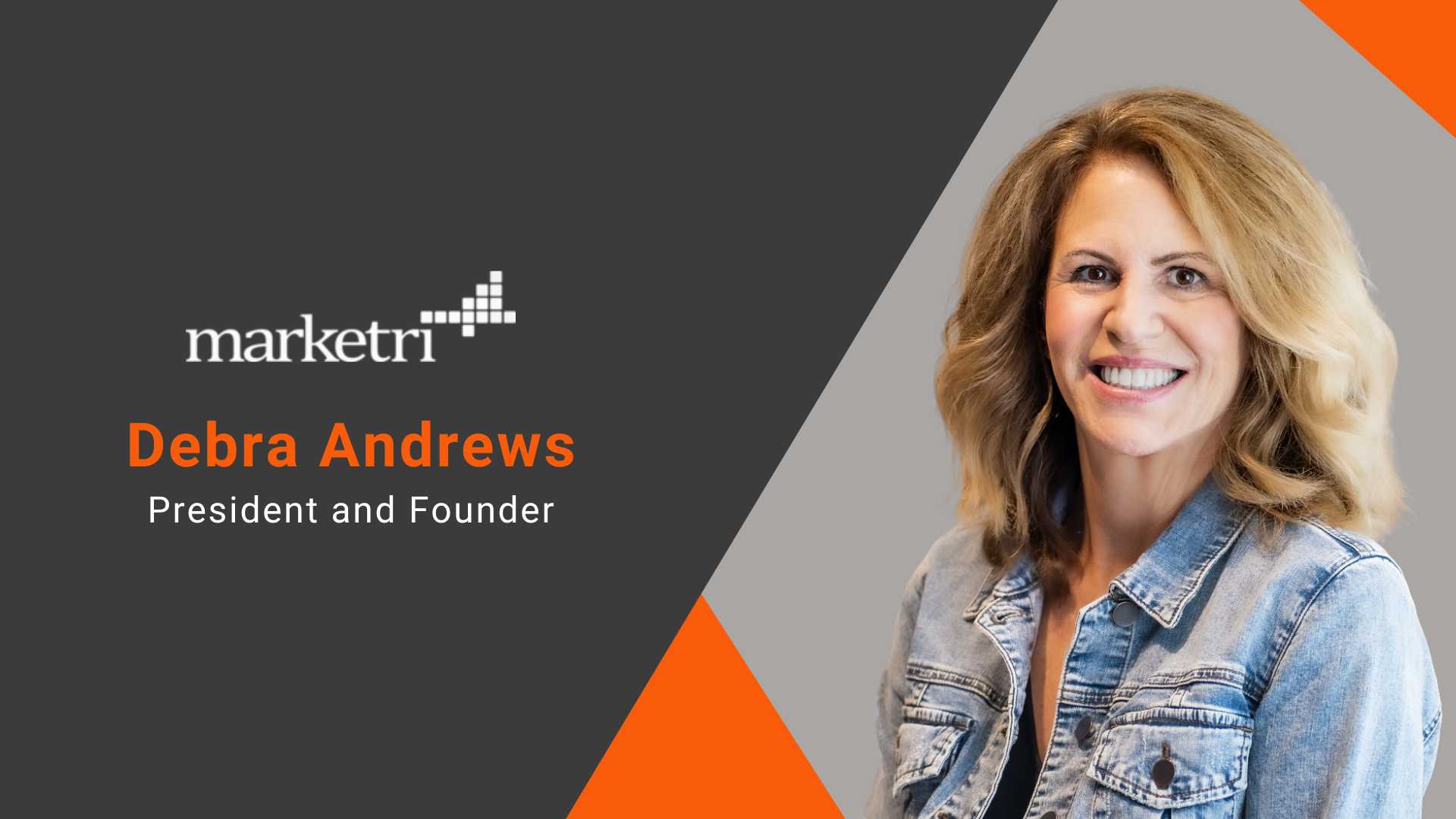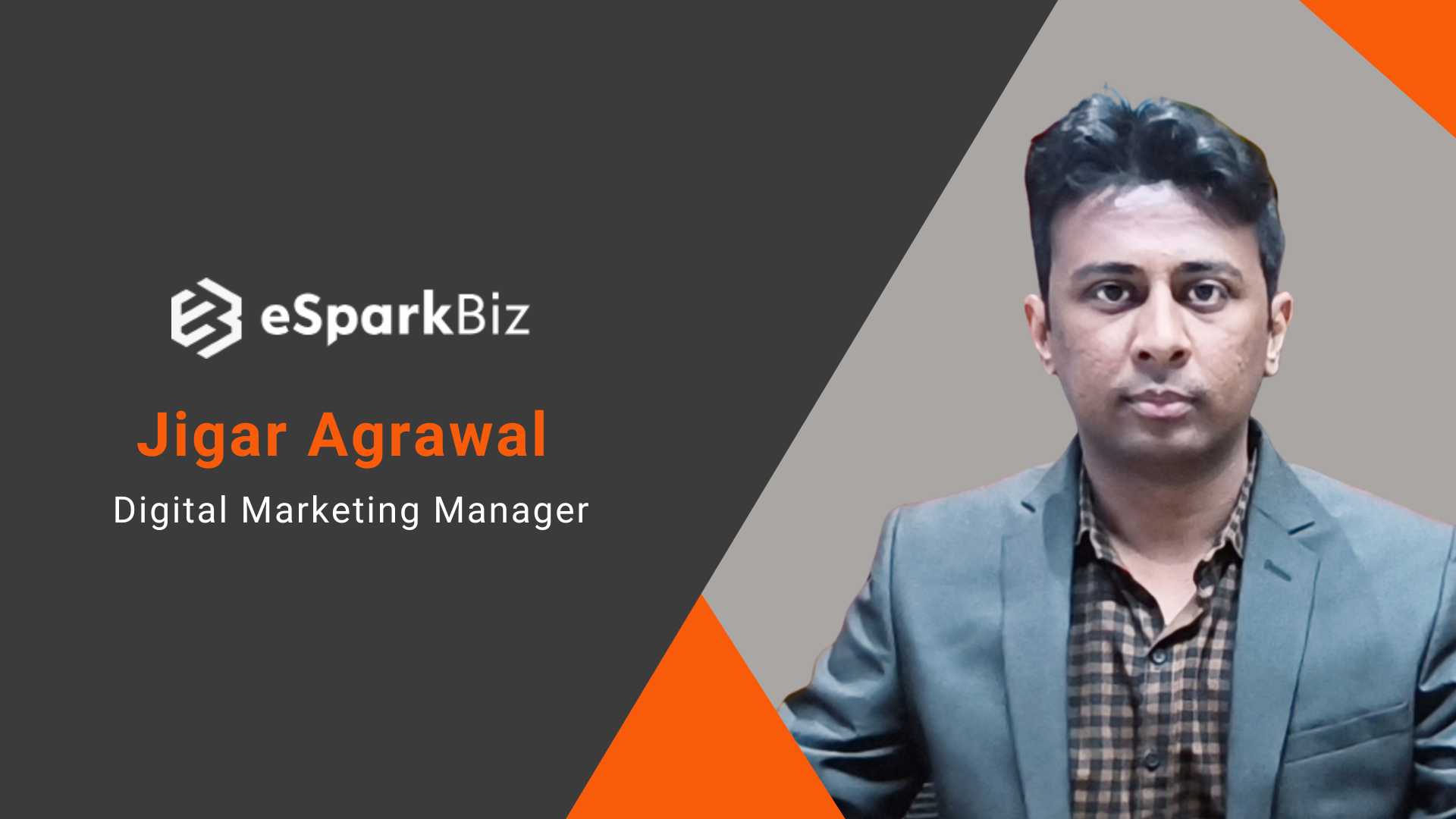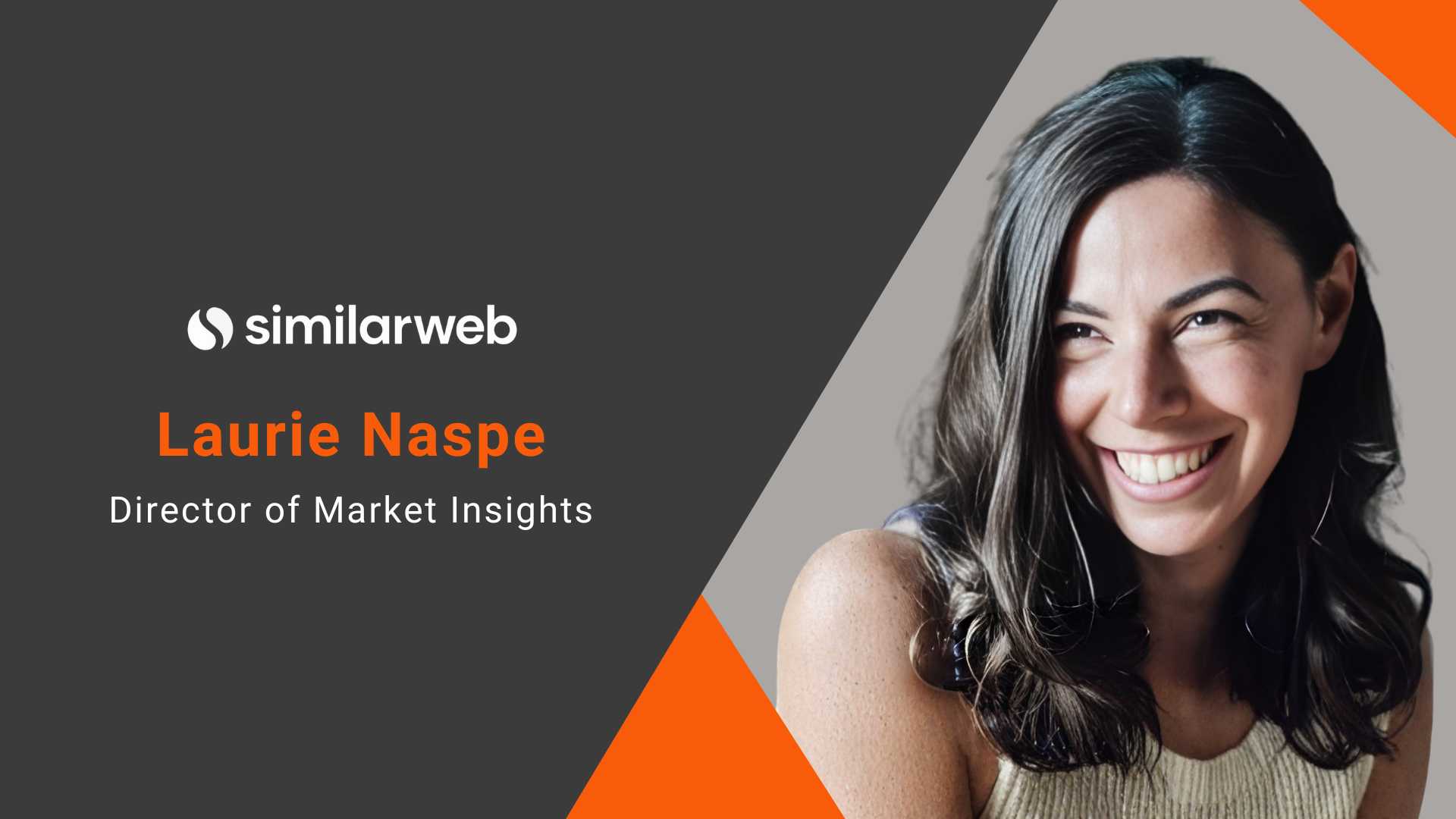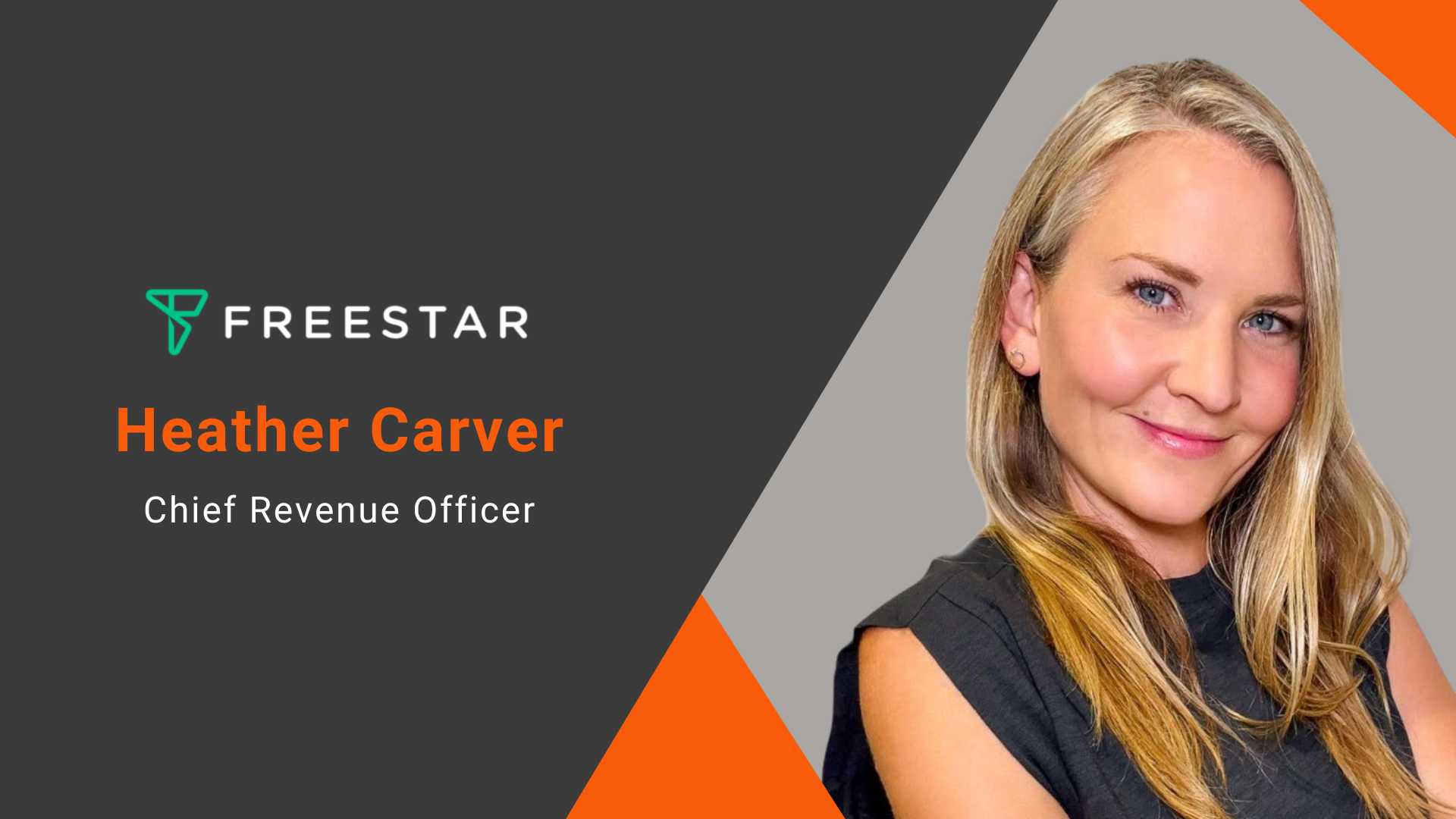
Interview
Nift CRO Saket Mehta on redefining commerce media through AI-powered gifting, customer loyalty, and experience-first monetization.
marketing 12 Nov 2025
1. What attracted you to Nift at this stage in your career and what excites you most about joining as the company’s first Chief Revenue Officer?
Over my career, I’ve worked on all sides of the advertising equation and at companies at every stage of growth, from early stage to IPO to acquisition to Fortune 500. I was on the buy side at TubeMogul/Adobe, the sell side at Chartboost, and the publisher side at Gopuff and Block, where my focus was building and leading revenue and partnership teams. During my time at Block, Nift was a partner of ours for three years, so I’ve seen firsthand how the model drives strong revenue while prioritizing the customer experience. I was also able to get to know Elery Pfeffer, Nift’s founder and CEO, very well while working with him as a client, and I’m thrilled to join Nift now because we share a clear view of both the market opportunity in front of us and the best way to accelerate Nift’s growth.
The timing is also perfect for me to step into the CRO role because commerce media is at an inflection point. The primary challenge most revenue owners face today is monetizing CMN inventory while still offering personalized customer experiences. Brands and commerce platforms are both rethinking how to connect with consumers in ways that feel more contextually relevant and native. Nift is addressing this challenge by prioritizing the customer experience while unlocking revenue. The company is positioned to see explosive growth by solving commerce platforms’ ad challenges, and I’m excited to help achieve that.
2. In your view, how does Nift’s model differ from the retail media playbook and why do you see it as especially well-suited for fintech and other consumer-facing platforms?
Our two-sided ad marketplace, which connects commerce platforms to advertisers and brands to new customers, solves the problem of intrusive ads for consumers, platforms and brands alike.
Consumers are annoyed by traditional retail media formats like sponsored search, banner ads and sponsored product ads because they interrupt the digital experience. Commerce platforms want monetization opportunities that enhance their customer experience. And brands are looking for cost-efficient ways to reach and convert new customers.
Nift addresses the pain points of all three groups by creating positive customer moments through relevant gifting. Commerce platforms partner with us to unlock passive revenue by showing appreciation to their customers and DTC, midmarket and enterprise brands and subscription companies join our platform to efficiently lower their CACs.
Also, Nift works across all verticals, including fitness, travel, utilities and others, not just retail. And because it enables consumer-facing platforms to generate revenue without compromising the experience, it’s a particularly good fit for fintech companies like Block, Klarna and Zip, where trust and the customer experience are at the heart of the business model.
3. How do you see collaborations such as the one with Klarna shaping the broader industry’s approach to integrating ad inventory into customer experiences?
Our partnership with Klarna serves as proof of concept on multiple levels. It shows that gifting drives customer loyalty for our partners that operate consumer-facing platforms as well as brand engagement. It’s also a great example of how major fintech players are moving away from interruptive ads and toward experience-first models. In addition, it provides a framework other consumer platforms can replicate to integrate advertising in a way that’s authentic to their brand. And finally, it demonstrates how the right advertising approach can strengthen rather than strain customer relationships.
4. You’ve led advertising partnerships at companies ranging from startups to IPOs. What lessons from your time at Block, Gopuff and TubeMogul (which was acquired by Adobe) will you bring to Nift as it scales its revenue and partnerships?
The biggest lesson I’ve learned is that you always have to start by understanding the customer’s problem and focus on solving that. I’ve also learned how valuable it is to blend technology and sales in the right way to move faster. Developing real human relationships and knowing when teams need to rely on human expertise instead of digital tools are key, too.
I’ve also learned the importance of building a strong team and a great work culture. As a leader, I aim for a high “do-say ratio,” meaning people keep their word when they say they’ll do something. Experience has also taught me how valuable it is to hire adaptable team players who can move fast and learn quickly. People with those qualities are crucial to the growth of any business.
5. Can you share how AI is being applied to personalize experiences and generate incremental revenue for partners?
Nifts are thank-you gifts introducing customers to new brands and products that are relevant to them based on their history and interests. We use AI to align brand gift offers with each recipient’s preferences and behavior. Matching a customer with offers personally tailored to them drives higher engagement, and our brand partners are seeing conversion rates of up to 40%, versus 1%–3% for traditional digital ads.
We also use machine learning to identify the best moments for our partners to present a gift. Nifts can be delivered at nearly 20 different customer moments, including post-purchase, not just at checkout. For example, a partner might present a Nift to thank a customer for downloading an app, making an on-time payment or leaving a review. Partners can even offer a Nift to acknowledge a customer’s birthday or anniversary. The technology helps identify the best time and context to present the offer. Our AI also enables seamless integration into customer journeys. Nifts can be integrated into email, SMS or in-app or in-store experiences.
6. What do you see as the biggest opportunities and challenges for commerce media over the next 2–3 years and how does Nift plan to stay ahead of the curve?
Commerce media is quickly expanding beyond retail into other verticals, like fintech, travel, lifestyle and gaming, so there’s a big opportunity for us over the next few years as the market broadens. We’re seeing a shift toward advertising that enhances rather than interrupts the customer journey and an increased focus on performance, with companies looking to drive measurable, attributable revenue.
As more players enter the commerce media space, differentiation will become harder. But the biggest challenge will still be balancing integrations that feel fully native with authentic customer experiences that don’t feel intrusive. Think about a financial services company that presents a non-endemic banner or video ad on its platform. The ad disrupts the experience and annoys the customer. The company can avoid that, and add value to the experience instead, by presenting an offer that acknowledges and rewards the customer for a specific action, like making a second on-time payment or opening a new account.
Nift is focused on staying ahead by being a first mover into new categories, like we are in fintech, where our recent partner launches include Klarna and Zip. We also let platforms connect with customers at multiple touchpoints, not just during the transaction, so offers are well-timed and delivered through the right channel for each customer. And we’ll continue to lead with proof of results, focusing on the outcomes while ensuring the consumer experience is repeatable.
7. How do you see Nift’s growth impacting consumer loyalty and brand engagement in the long run and what role do partnerships play in scaling that impact?
Nift is building the foundation to become a primary channel for brand discovery by 2026, giving platforms a way to deliver relevant, well-timed offers to customers. Our growing partner ecosystem will be key to scaling that impact, especially as we expand internationally. Strategic partnerships with platforms that are leaders in their industry drive credibility for our solution, expand our distribution and create network effects where every new platform and brand increases the value for all participants.
Lori Rosen on PR’s Evolution in the Digital Era
marketing 12 Nov 2025
1. Having represented media brands and publishers from the magazine era to marketing agencies and content creators today, how has the evolution of the media space shaped the way you approach PR?
We have always followed a top-down public relations strategy, with a focus on national media outlets in television, radio, and print, as well as industry outlets in the B2B space. But as the media landscape expanded and fragmented across digital channels, new opportunities for coverage emerged. This shift encouraged a “more is more” approach, as national media hits began to have shorter life spans. At the same time, coverage—whether national or regional—now lives on beyond its initial run, shared and amplified across digital channels, newsletters, and social media, giving a lasting presence and enduring shelf life. The evolution continues to take shape. Podcasts and Substack writers have expanded the media universe again, and our strategy has adapted to actively target these emerging platforms.
2. For media brands, publishers, content creators and marketing agencies, what are the key ingredients of a successful PR strategy?
First and foremost, companies in the media and marketing space must execute a solid thought leadership campaign. Be willing to comment on timely topics—and say something different from everybody else. That’s how you stand out, and how you demonstrate true thought leadership. After all, what’s the point in commenting if you’re simply saying what everybody else is saying? Media industry leaders must be ready and poised to create their own content via newsletters, bylined articles and blog posts, as well as manage a robust LinkedIn presence. Staying front and center is key, and being viewed as a thought leader in your field of expertise will keep you ahead of the competition. Further, consistency is critical; a one-off effort isn’t going to achieve the same impact as a sustained, long-term campaign.
Beyond that, availability and responsiveness are also critical. In a marketing and media landscape where everything moves so quickly—major announcements, brand controversies and industry shake-ups included—you want to earn the reputation with reporters and producers as a trusted source who can reliably deliver quick, insightful commentary on a tight deadline. A strong PR partner will pave the way to building that rapport with key media contacts.
3. Over the years, the lines between PR, marketing, and digital have blurred. How has this convergence reshaped client expectations and the role of PR firms?
The lines between PR, marketing, and digital have always overlapped, but today the role of PR agencies has clearly expanded. Agencies are now expected to manage comprehensive content strategies as an integral part of campaigns—developing website copy, articles, blog posts, email newsletters, and even coordinating events. Increasingly, they’re also tasked with running social media campaigns. While this may appear to be a natural extension of PR, in practice social media campaigns require a different set of skills, with greater emphasis on design, agility, timeliness and cultural sensibility. Throughout the years, I’ve always found the evolution of our industry exciting and invigorating, and today is no different.
4. You’ve compared the rise of AI to the early days of Google. Can you expand on that comparison?
In the early years of Google, it became evident that articles and backlinks from authoritative domains significantly influenced search rankings, often determining whether a brand appeared on the first page of results. As a result, media coverage became an essential component of SEO strategies. This dynamic persists in the current era of artificial intelligence. Brands, marketers and PR practitioners are learning to navigate and leverage AI tools in a way that benefits their businesses. Like we’ve seen with SEO, positive press drives website visits and overall brand presence. However, negative press can also wreak havoc on search results, living in full view online for years. Media coverage continues to play a central role in shaping how companies surface in searches, underscoring the enduring importance of digital strategy. We, as PR professionals, must be nimble and adapt to meet our clients' needs in a world that is continually advancing in technology.
5. How should agencies balance the use of data-driven tools with the need for creativity, relationships, and storytelling?
Let’s start with storytelling. That is the most effective tool in the arsenal. Creativity and relationships are a close second, and the data-driven tools should be used for polish and efficiency. There are no shortcuts; you cannot circumvent creativity. However, it is important to embrace new technology and leverage it accordingly. Effective ways to use AI include:
• Embrace it like a highly customizable tool, or even a co-worker—not a crutch.
• Bounce ideas off ChatGPT; ask questions, ask follow-up questions.
• Give feedback so it knows why you chose the response you did over the other ones.
• Use it for ideation, format suggestions and design concepts, but not as a substitute for judgment and critical thinking.
• Aim to think of yourself as an artist and a scientist; if you struggle to find that balance, collaborate with a coworker whose strengths complement your own.
6. Many marketing and technology brands are competing for visibility and credibility. What advice would you give them to stand out in today’s marketplace?
Where do I begin? First and foremost, standing out requires a commitment to a long-term plan. Understand that visibility is not achieved through a single quick fix or isolated success. It is not just the iconic New York Times profile, the AP feature, the high-profile podcast appearance, or the viral social media post. Nor is it only the bylined article in The Wall Street Journal or the CNBC appearance. True impact comes from the cumulative effect of all these efforts. Consistency is essential. Much like cultivating a thriving plant, a PR campaign must be nurtured over time to remain vibrant and top of mind.
If I were advising the OG technology leaders (aka Mark, Elon, Jeff), I would advise them to tone down the decadence and up the empathy factor. Leverage your resources to organize worldwide volunteer efforts for good or build housing for homeless people in distressed areas. Put your talent and resources to good work, and the public would be happy for you to boast about it. Think of other iconic leaders that we admire, such as Lady Diana, who went into minefields; Warren Buffett, who committed to giving most of his money away; and Oprah, who literally built schools for girls in Africa.
More realistically, for non-household name technology and marketing brand leaders, it is important to take a stand and be authentic. People crave authenticity. We would also recommend creating and owning an event that showcases your company’s unique strengths on a broader stage and exists separately from the day-to-day business. Another powerful tactic is to revive the pre-dot-com tradition of meetups. They foster community, build brand equity, and deliver real value. Plus, they are fun.
MADTECH.AI's AI-Powered Marketing Intelligence Helps Brands Turn Fragmented Data into Competitive Advantage
marketing 12 Nov 2025
Marketers today are surrounded by siloed, disconnected, and unusable data and struggle to convert it into smart decisions fast enough. We built MADTECH.AI to bridge that gap and make AI-powered marketing decision intelligence (MDI) usable for all. It is increasingly clear that “Speed to Value” is becoming essential because leadership demands measurable results with a minimum of waste. Our mission is to simplify marketing analytics complexity so marketers can act with confidence and make a positive impact.
Your platform is “purpose-built by organization type and user role.” Can you explain how this approach simplifies complexity for both B2C and B2B marketers?
A retail marketer, a B2B strategist, and a CMO all need vastly different signals. Our platform is designed to deliver tailored insights by role and organization type, so users see only what matters most to them. This eliminates noise and reduces the time spent digging through irrelevant data. The result is faster, more accurate decision-making across the board.
You talk about making insights “accessible to all.” Why is democratizing data and analytics so important for the industry right now?
Data silos and reliance on technical specialists often slow down smart decision-making. By democratizing access to data and insights, we empower everyone so they can use data confidently. This creates a culture of agility and alignment across the organization. In an industry moving at high speed, accessibility is the foundation for innovation and growth.
For emerging brands or agencies with leaner resources, how does the platform help level the playing field?
Smaller teams often lack the budgets or talent pools of larger enterprises. We provide them with pre-built models, automated pipelines, and AI-driven recommendations that are ready to use. This allows lean teams to unlock enterprise-grade marketing decision intelligence without the overhead. In practice, it means they can compete on equal terms with bigger players.
Where do you see the biggest opportunities for innovation in MarTech + AdTech over the next five years?
The next leap is AI-based Marketing Decision Intelligence. This is deeply data-connected AI that not only reports activity and performance, but also predicts and recommends actions in real time. We’ll also see stronger convergence of MarTech and AdTech, driving unified cross-channel and cross-platform customer journeys. Privacy-first personalization will shape how brands engage with audiences. Together, these trends will redefine speed, precision, and effectiveness in marketing.
What advice would you give to marketing leaders who want to become more data-driven but feel overwhelmed by complexity?
Start by focusing on one or two areas where data analytics can deliver a visible impact quickly. Small wins delivered quickly build confidence and momentum for broader adoption. Choose platforms that remove complexity and make insights easy to use. Most importantly, foster a culture where sharper, smarter, faster decisions, and not just descriptive dashboards and scorecards, define being “data-driven”.
An Updated Look at the Enduring Value of Press Releases
marketing 30 Oct 2025
What is your perspective on the value of a well-crafted press release?
Every company across the technology ecosystem — from vendors to channel and go-to-market partners to end user organizations — needs to make announcements in order to broadcast growth and support their corporate initiatives.
Press releases have traditionally been the main communication vehicle for making formal corporate announcements. However, today there are many other valuable communication channels to also consider.
Press releases should be targeted at not only at journalists, but also at customers, partners, investors, analysts and even employees.
An impactful press release campaign should deliver not only influential news coverage and follow-up interview opportunities, but also create meaningful business development and sales momentum.
In today’s fast-paced digital landscape, where do press releases fit into a broader communications strategy?
The quick answer is that press releases are an integral part of any corporate communications plan and one of many communication channels that should be utilized.
From our experience, press releases are a good fit for formal corporate announcements, such as the availability of new products and services, the signing of agreements with customers and partners or the completion of other similar company achievements and milestones.
However, not every company announcement requires a press release.
Examples include welcoming new staff, highlighting recent press or analyst coverage, promoting company events and even sharing a holiday greeting.
Each of these examples can be considered a company announcement and the campaigns to support these types of announcements usually revolve around LinkedIn and other social media posts, web site content and email-based outreach.
For these types of announcements, a press release offers no added value and would actually be inappropriate.
What strategic purpose do press releases serve when compared with more immediate channels like social media?
Every company announcement needs to be supported by a carefully planned and executed campaign. This applies to both formal corporate announcements that revolve around the distribution of a press release and casual company updates shared on social media.
At the base of each campaign is a set of marketing assets, including the content, possibly quotes from internal and external sources, and supporting images. Other elements of a successful announcement campaign include effective distribution to and engagement with target audiences.
Press releases, social media posts and direct emails are common examples of distribution channels, while journalist outreach is a typical example of engagement with a target audience.
How much weight do journalists still place on press releases as an information source?
The truth is that journalists are inundated with press releases and pitches from technology vendors on a daily basis. Journalists are more responsive to announcements that are well-written and outreach that is easy to understand. At the same time, journalists are quickly turned off by announcements that overuse marketing superlatives.
What separates a press release that gets traction from one that simply creates background noise?
A meaningful press release allows the reader — whether a journalist, sales channel partner, potential customer or investor — to quickly understand what is being announced and the benefits or strategic importance of the announcement.
A quote from external sources, such as a customer, analyst and other relevant third party, always adds significant value to a press release.
Our advice is that the structure and content of a press release should be straightforward and easy-to-understand. Alternatively, press releases that contain too many marketing superlatives and lack a logical flow of information will not generate the intended responses.
You mentioned that the audience for press releases has expanded. Are you seeing tech vendors tailor them more toward media, investors or potential partners?
Press releases and other types of announcements are opportunities for companies to facilitate engagements with the important players in their markets and support their corporate initiatives.
An impactful press release — one that is well written and properly distributed — can lead to influential news coverage and attractive follow-up interview opportunities.
We also see that emerging technology vendors also use their press release announcements to facilitate interactions with potential and existing investors.
Similarly, the sales channel partners we work with around the world rely on the press releases and other company announcements of our technology vendor clients. These business partners — many of which are system integration firms, value added resellers and managed service providers — always tell us that they use these announcements to engage with their potential end user customers and move forward the sales opportunities they are pursuing in their local markets.
What role should distribution play in maximizing a press release’s visibility?
Press releases are much more than just the page and a half of text describing a company announcement. Finalizing the content of an announcement is in fact just the middle point of the overall press release campaign.
Good press release distribution can lead to influential news coverage and important follow up interview opportunities. For this to happen, there needs to be an effective outreach to relevant journalists well before the press release is distributed.
Good press release distribution can also generate valuable business development and sales momentum. In addition to journalists, a company should also send its press releases to its customers — both existing and potential — as well as its sales channel and technology ecosystem partners. This outreach can trigger new business opportunities and move forward sales opportunities that are in process.
Beyond media coverage, what impact can a consistent press release program have on sales and business development initiatives?
A press release is an excellent opportunity for a technology vendor to interact with its network of customers, partners and investors.
Formal briefings or casual conversations can be scheduled with customers, sales channel partners and technology ecosystem partners to introduce the topic of each press release. For example, for a press release announcing a new product or technological capability, demonstrations can be scheduled with customers and partners as part of ongoing account management activities.
This type of ongoing initiative with each press release can generate new business opportunities, move forward sales opportunities in process and even wake up sales processes that have gone dormant.
This area of business development and sales promotion is unfortunately often overlooked by the marketing staff responsible for press releases and is a missed opportunity.
As communications continue to evolve, what does the future hold for press releases?
Press releases will always be relevant, especially for formal company announcements.
There of course will be additional channels to consider that will also add value to the communication and distribution of company announcements.
Companies that invest the right resources to correctly write and distribute press releases can turn these company announcements into powerful campaigns that support not only marketing, but also sales and business development.
PetAg & 5WPR: Science-Backed Pet Wellness
behavioral marketing 3 Oct 2025
At PetAg, science isn’t just part of the process – it’s at the heart of everything the brand does. Since 1930, the team has developed products with a rigorous research-driven approach to ensure safety, quality, and effectiveness. That commitment to proven science sets us apart in an industry where not every product is backed by the same level of testing and expertise. It’s why veterinarians, breeders, and pet parents have trusted PetAg for generations.
2. How do you balance science-backed credibility with emotional connection when communicating PetAg's brand story?
We know pet parents want solutions that work, but they also want to feel an emotional connection to the brands they bring into their homes. We focus on communicating the science in a clear, relatable way, while never losing sight of what really matters – the joy of seeing pets thrive. That balance has been part of PetAg’s identity for nearly a century.
3. How are you seeing consumer expectations around pet health and wellness evolve, especially in areas like supplements and nutrition?
Pet parents are more proactive than ever about their animals’ health. They’re looking for preventative solutions, not just treatments when issues arise. Transparency, quality, and ease of use are all key expectations. Supplements are becoming part of daily care routines, much like vitamins are for people – and PetAg is proud to deliver products that meet those higher standards.
4. What role does education play in driving adoption of more advanced pet wellness solutions?
Education is essential. Pet parents are eager to support their pets’ health but often need help understanding the science behind probiotics or advanced nutrition. With PetAg, we view education as part of our responsibility – whether it’s through packaging, brand resources, partnerships, or beyond. The more informed a pet parent feels, the more confident they are in choosing the right solution for their companion.
5. With influencer pet marketing and partnerships gaining traction, how important is authentic storytelling in building trust and loyalty?
Authenticity is non-negotiable. Pet parents can tell when a message feels forced, and trust is everything in our category. We work with influencers who genuinely share our values and use our products with their own pets. By focusing on real experiences and transparent storytelling, we create meaningful connections that last well beyond a single campaign. That authenticity not only builds credibility – it strengthens the bond between PetAg and the pet parent community.
6. What excites you most about the future of pet health and wellness industry, and how is 5WPR positioning PetAg to lead in that future?
The pet wellness industry is evolving rapidly, which is exciting. We’re seeing human-level science and innovation applied to animal care in ways that truly raise the standard for pets. From personalized nutrition to proactive supplements, the opportunities to improve pets’ lives are endless. PetAg has always combined a science-backed approach with a genuine love for animals, and at 5WPR, we’re amplifying that message. Together, we’re ensuring PetAg continues to be a trusted name in pet wellness for years to come.
Future of Intelligent Automation | Nintex
business intelligence 3 Oct 2025
1. How do you define “intelligent automation,” and what sets it apart from traditional workflow automation in today’s enterprise context?
Intelligent automation is not just the next evolution of workflow automation — it's a steppingstone toward agentic business orchestration. That means blending AI, agents, low-code development, and dynamic business process orchestration into a system that doesn’t just automate tasks, but autonomously adapts, learns, and coordinates across the enterprise.
Where traditional automation is largely deterministic, intelligent automation is context aware. It can interpret signals in real time, prioritize based on urgency or behavior, and respond when business conditions change. But the real breakthrough comes when you shift from automating steps to orchestrating outcomes — across people, systems, and now, intelligent agents.
This is what we call agentic business orchestration: enabling work to move autonomously and intelligently across the enterprise with the help of agents within purpose-built solutions tailored to specific business logic and processes. It’s automation that is guided by human oversight but not constrained by it. To get there, organizations need a unified platform that brings together process mapping, business orchestration, and AI agents with the power of low-code tools in a single architecture.
2. What role does automation play in closing experience gaps across the customer journey from onboarding to support and retention?
Customer experience isn’t just about front-end touchpoints — it’s about how well the business moves behind the scenes. That’s where automation becomes essential.
By connecting siloed systems and orchestrating cross-functional processes, automation helps deliver consistency and responsiveness across the entire customer lifecycle. It accelerates onboarding by syncing data across platforms, supports dynamic case routing, and enables proactive service through contextual triggers.
When embedded across the value chain, automation becomes the foundation for agentic business orchestration. That means not just accelerating tasks but enabling intelligent agents and workflows to operate in harmony — adjusting, escalating, or resolving customer cases in real time. All of this can also be done autonomously to augment human performance and drive a non-linear increase in efficiency – even with humans still in the loop.
The result is a seamless, end-to-end experience that builds trust and loyalty.
3. What are the most common misconceptions organizations have when adopting automation to improve customer outcomes?
The biggest misconception is treating automation as a band-aid solution — something you add to a broken process and expect immediate transformation. In reality, automation must be part of a broader operational shift.
Organizations that succeed view automation as a strategy to drive business performance: first mapping processes, orchestrating and automating cross-functional workflows, and ultimately layering in AI to drive end-to-end orchestration through purpose-built solutions.
Another misconception is that automation tools can operate in isolation. Without integration, governance, and alignment, they create more friction than they solve. To drive real customer outcomes, automation must be part of a connected fabric — orchestrating across departments, systems, and now, AI agents — so the experience is cohesive, not fragmented.
4. Have you seen specific verticals (e.g., financial services, government, healthcare) realize faster returns with intelligent automation strategies?
Absolutely — financial services, public sector, and manufacturing organizations are seeing strong ROI, largely because of the complexity and compliance demands they face.
For example, financial services organizations, intelligent automation can accelerate loan origination by auto-extracting data from supporting documents, validating it against internal and external sources, and routing applications for approval — all while maintaining a complete audit trail. It can also streamline KYC/AML checks, regulatory reporting, and customer onboarding, cutting processing times from days to hours.
iQumulate Premium Funding leveraged Nintex Automation CE to document and reimagine 150+ processes, created smart forms to streamline communications with brokers, and automated internal quoting — saving 3,000+ hours of employee time.
Government agencies can use automation to manage benefits applications, licensing, and permits. By integrating data from multiple legacy systems and enabling real-time case tracking, agencies can reduce backlogs, improve citizen response times, and ensure compliance with transparency mandates.
Nintex worked with the County Court of Victoria to digitize its paper-based processes so that it could capture information electronically, as well as automate the routing of critical court documents.
For manufacturers, intelligent automation can coordinate supply chain workflows, from purchase order processing to quality inspections. Automated exception handling and compliance documentation help manufacturers maintain production schedules, reduce costly delays, and meet stringent regulatory standards in industries like aerospace and pharmaceuticals.
At Nintex, we helped CORE Molding Technologies automate workflows across the organization, including purchase order, chargeback application, and pricing approval processes.
These industries benefit when automation evolves into agentic orchestration. Instead of relying on static scripts, they can deploy responsive workflows and digital agents that learn from usage patterns, adjust to new policies, and reduce time-to-resolution — all while maintaining governance.
5. What KPIs should companies track to evaluate the success of automation-driven, customer-centric initiatives?
Beyond CSAT, the most meaningful KPIs reflect efficiency, speed, scale, and autonomy.
These include:
· Touchless resolution rate — the percentage of workflows or business process steps completed without manual intervention
· Time to resolution — how quickly business or customer-focused workflows are completed
· Human effort saved per workflow — the percentage of workflows that are automated
· Cost per transaction — measuring sustainable operational impact
More advanced teams also look at the volume and performance of agent-led tasks — a signal that they’re progressing toward true agentic orchestration.
6. What does the future of customer-centric automation look like, especially as AI and low-code/no-code platforms mature?
The future of customer-centric automation lies in systems that are not only intelligent but also adaptive and deeply embedded across the business. As agentic AI evolves and low-code/no-code platforms become easier to build with, organizations will shift from rigid, step-based processes to dynamic, context-aware workflows that can learn, adjust, and act in real time.
Rather than relying on disconnected point solutions, businesses will be empowered to build their own tailored applications — designed around their unique models, systems, and customers. This enables faster time-to-value, fewer dependencies on specialized development resources, and greater flexibility as needs evolve.
Importantly, this shift won’t just improve customer experiences — it will make organizations more efficient, more compliant, and more scalable in how they deliver value. By combining AI, automation, and applications in a unified platform, businesses will be able to proactively solve problems, reduce operational complexity, and build long-term customer trust.
Get in touch with our MarTech Experts.
Beyond Black Friday: Year-Round Retail
digital marketing 2 Oct 2025
AI & Composable Content: Karl Rumelhart on Contentful’s Digital Edge
personalization 2 Oct 2025
1. How critical is continuous investment in AI and personalization technologies for maintaining a competitive digital edge?
In marketing, AI for personalization is quickly transforming from a luxury into a default for brands to make the most of every interaction. It’s changing how content is created, enabling marketers to scale more individualized messaging to targeted audiences and enhance experiences across channels. Hyper-personalized touchpoints that feel tailor-made can help brands reach customers in an oversaturated marketing environment.
AI personalization tools will only continue to advance, so brands need to adopt nimble, tech-forward tools now that continuously integrate modern capabilities and allow them to confidently prepare for a highly personalized, autonomous, and data-driven future. Those who stay on the cutting edge of this technology and invest the time and resources to grow and learn with it will find themselves ahead of the curve.
2. How prepared is your organization to adopt composable content infrastructure to support flexible, omnichannel experiences?
Contentful helps brands deliver seamless, connected experiences that meet customers wherever they are, and empower marketing and developer teams to access and manage content, data, and logic within a single tool.
We’ve seen how traditional monolithic content management systems can slow teams down by locking content into rigid templates or keeping it siloed across channels. With our composable architecture, teams can experiment with campaigns at scale, increasing their output and enriching their insight loops to make more informed, data-driven decisions. Contentful’s API-first framework also helps marketing teams deliver cross-channel personalization through unified audience models and AI-assisted content operations, automating translation, tone shifts, and variant generation to deliver precise messaging at scale.
Many of our customers implement a phased adoption approach, starting with a specific use case, such as a localized campaign or homepage refresh, and expanding from there. But, we are seeing more and more brands realize the immediate value of our platform and opt for a faster transition and full deployment to Contentful, including not only the CMS itself but also Contentful Personalization and Studio, our Visual Experience builder. In addition, our API-forward platform can run alongside existing systems, maximizing relevance and speed, enabling brands to stay ahead with infrastructure that adapts just as quickly. This allows marketing and development teams to access content and collaborate more efficiently and deliver consistent, omnichannel experiences that scale, while reducing operational risk and accelerating time to value.
3. What percentage of your budget is allocated to R&D or product innovation, and how is that expected to evolve?
The digital experience platform (DXP) space is experiencing rapid growth, a testament to escalating customer needs and undeniable market demand. To better understand our role and impact, we’re increasing our investment in research and development by more than 20% this year – allowing our teams to accelerate innovation, better understand how to incorporate AI capabilities, and set a new standard for what customers can expect from a DXP:
● Improving operational efficiency by leveraging AI to automate repetitive tasks and optimize how content is created, accessed, and distributed.
● Embedding an intelligence layer with AI-driven insights that guide more effective personalization strategies and predictive recommendations.
● Breaking down silos by deploying AI and agent-based automation to unify data, channels, and content, ensuring consistent messaging across communications and social platforms.
4. To what extent is your organization leveraging partnerships with third-party AI and content platforms to accelerate innovation?
Partnerships are central to how Contentful drives innovation and supports our customers. Our composable platform is a strategic nexus, integrating with leading tools across AI, marketing automation, and commerce, helping teams deliver content with greater speed, flexibility and precision.
For example, our partnership with SAP enables both consumer and B2B brands to build commerce experiences across channels that build loyalty and growth. We also integrate with Braze, an industry leading omni-channel marketing automation tool, that makes it easier to safely deploy content stored in Contentful to all marketing channels with real-time sync.
Another example is our partnership with Shopify. Through this integration, we connect content and commerce in one workflow – improving storefront design flexibility, streamlining localization, and activating AI-powered personalization. Our new Shopify app and content connector allow marketers to synchronize product content and deliver more relevant, engaging shopping experiences at scale.
By expanding our curated partner ecosystem, we continue to give teams the tools they need to experiment, personalize, and scale across channels. These collaborations are helping our customers move faster and stay ahead in a competitive digital environment.
5. How do you measure success when deploying modular or API-first content delivery systems?
An API-first development process fuels digital transformation by enabling measurable marketing and operational impact. Success isn’t just about the technology, but what it empowers teams to achieve. Marketers can measure success through outcomes like:
Speed to market: How quickly new content or updates reach customers across channels.
Experimentation velocity: The number of campaigns, tests, or personalized experiences that can be launched in a given month.
Content reuse: The percentage of content efficiently repurposed across regions, brands, or platforms.
Experience sophistication: The ability to deliver dynamic, data-driven front end experiences without bottlenecks.
An API-first content system, where the API is the single source of truth, underpins these results. By streamlining workflows and freeing teams from repetitive tasks, it creates space for more creativity, faster iteration, and scalable brand impact.
6. How important is executive leadership experience in scaling enterprise platforms when evaluating digital transformation partners or solutions?
Executive experience matters, but what matters more is how you apply it: by choosing solutions that drive agility, accelerate time-to-market, and ensure brand consistency across every channel. The leaders who succeed are the ones who embrace the processes and partners that deliver real business outcomes, rather than clinging to old systems.
Today’s consumers have constantly changing expectations. Our customers count on us to help design, implement, and deploy unified brand experiences that meet them where they are. We admire brands that can adapt flexibly to meet any customer need, and are proud to partner with innovative companies to help digital brands unlock their full value by building, launching, and shipping websites and content faster.
My own journey starting my career as an academic mathematician shaped me into the leader I am today as Chief Product Officer at Contentful. Mathematics is about tackling hard problems by embracing their complexity. It also teaches the critical skill of finding the right abstraction model, the optimal framework for solving a problem. The same applies to building software applications: building with the right models and components will ensure true transformation and impact. Ultimately, it’s equally important to have partners who are both forward-looking and have demonstrated their ability to pivot quickly alongside the evolving industry.
Get in touch with our MarTech Experts.
Page 2 of 37
Most Recent
The 2025 Reality of the Solo Marketing Coordinator
Interview Of : Debra Andrews
How AI Is Transforming Martech – Jigar Agrawal from eSparkBiz
Interview Of : Jigar Agarwal
Transforming Marketing into a Growth Engine
Interview Of : Alexandra B. Mazzi
AI Search Optimization Can't Wait: Why Marketers Must Adapt Now
Interview Of : Laurie Naspe
The Rise of Agentic AI: How MetadataONE Is Transforming the Entire GTM Workflow
Interview Of : Lisa Sharapata
How Freestar and Audigent are Powering Future-Proof Publisher Demand
Interview Of : Heather Carver
